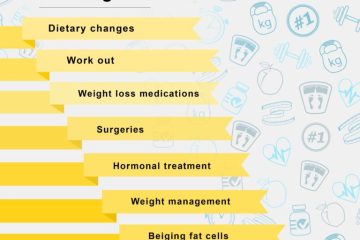Navigating the journey toward retirement can bring a mix of emotions and questions about health, wellness and lifestyle. How can we ensure that our later years are longer, fuller, and richer?
In this blog, we explore practical ways to enhance your well-being, nurture your mental and physical health and foster a sense of community and joy in retirement.
Join us as we discuss strategies for healthy aging and share tips to create a retirement life filled with vitality and happiness.
After reading this blog post, you can check out the following link to compare the most reliable retirement communities in Ontario.
Work on your physical health
One of the cornerstones of a vibrant retirement lifestyle is prioritizing your physical health. Physical exercise is essential for maintaining strength, flexibility and endurance as we age.
Taking part in activities like walking, swimming, or practicing yoga can significantly impact your overall well-being, helping to manage and prevent chronic conditions such as heart disease, diabetes and arthritis. Importantly, staying active also supports mental health by minimizing the risk of depression and cognitive decline.
Furthermore, incorporating a balanced diet rich in nutrients supports physical health and enhances your body’s ability to stay active and resilient. By making these healthy lifestyle choices, you’re laying a solid foundation for a retirement that is not only longer but is marked by quality, independence and fulfillment.
Nurture your mental health
Nurturing mental well-being is just as critical as physical health and plays a substantial role in achieving a vibrant retirement lifestyle. Mental health encompasses our emotional, psychological, and social well-being, influencing how we think, feel, and act as we age.
Engaging in activities that stimulate your mind and foster social connections, such as participating in community groups, learning new skills, or volunteering, can significantly enhance your quality of life. These actions keep the mind active and contribute to a sense of purpose and belonging.
Additionally, mindfulness or meditation can improve stress management, leading to greater peace of mind and emotional resilience. By consciously incorporating these habits into your daily routine, you create a nurturing environment for your mental health, paving the way for a retirement filled with joy, fulfillment and vibrancy.
Foster a sense of community
Creating a sense of community is a powerful avenue for enhancing life in retirement. Being part of a community offers older adults a network of support, friendship and shared interests vital for maintaining social connections and combating feelings of loneliness or isolation.
Engaging in community activities through local clubs, volunteer organizations, or interest-based groups allows for meaningful interactions and strengthening bonds with others. Fulfilling social connections is linked to improved mental health, increased longevity and a stronger sense of purpose.
Additionally, being active in a community can provide opportunities for continuous learning and personal growth, which are crucial for keeping the mind engaged and the spirit rich. Participating in community initiatives is fundamental in promoting a balanced and joyful retirement life in which everyone feels valued, connected and alive.
Consider transitioning to a retirement living community
Transitioning to a retirement living community can significantly contribute to a vibrant and fulfilling lifestyle during retirement. These communities are designed with the well-being of older adults in mind, offering a blend of independence and support that caters to physical and mental health needs.
One key benefit is access to various health and wellness programs encouraging active living, such as fitness classes and nutrition workshops tailored to suit different ability levels.
Additionally, retirement living communities foster a rich sense of community and belonging, providing ample opportunities for social engagement through organized activities, clubs and events. This social infrastructure not only combats loneliness but also promotes cognitive health by keeping individuals mentally active and connected.
Furthermore, retirement living communities are equipped with maintenance and housekeeping services, freeing residents from the burdens of daily chores and home upkeep. This shift allows older adults to focus more on enjoying their retirement, exploring new interests and cultivating relationships.
These communities also often offer a spectrum of living options to accommodate changing health needs without the stress of relocating. This continuum of care ensures that individuals can live securely, knowing that their future health and well-being will be considered.
Opting for a retirement living community can truly enhance the overall quality of life, offering a dynamic, supportive environment that serves as a foundation for a vibrant, active and joyful retirement.
Conclusion
In summary, achieving a vibrant and fulfilling retirement requires a holistic approach encompassing both physical and mental well-being.
By prioritizing physical health through regular exercise and a balanced diet, nurturing mental health by engaging in stimulating and social activities and fostering a sense of community, retirees can create a lifestyle that is not only active but deeply rewarding.
Each of these strategies uniquely contributes to the overall quality of life, ensuring that retirement is a period marked by vitality, joy and purpose. Remember, a vibrant retirement is within reach and begins with the choices you make today. Whether it’s through personal initiative or the support of a retirement living community, there is always time to pursue a life filled with health, happiness and meaningful connections.




